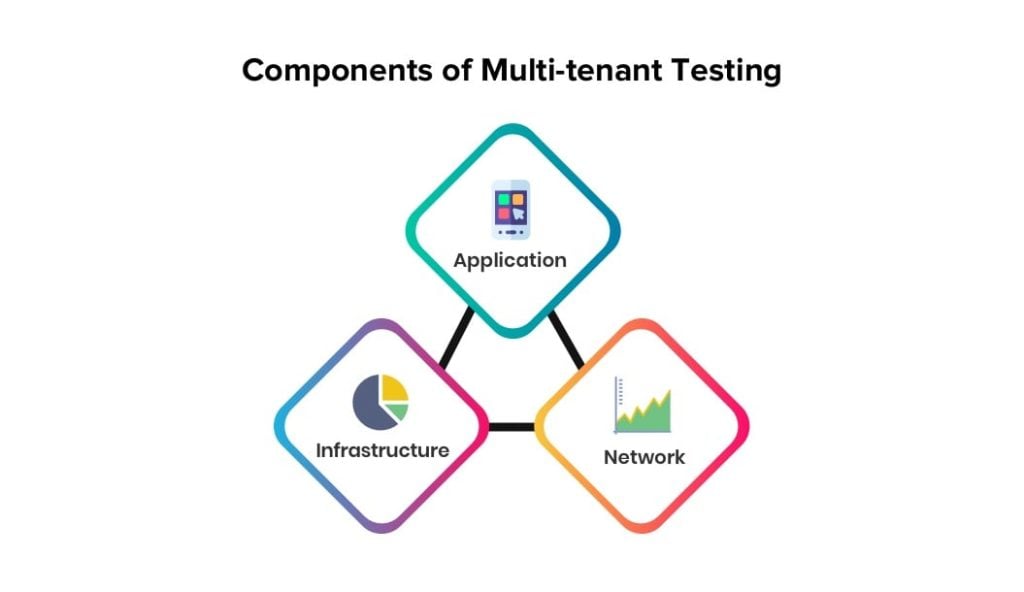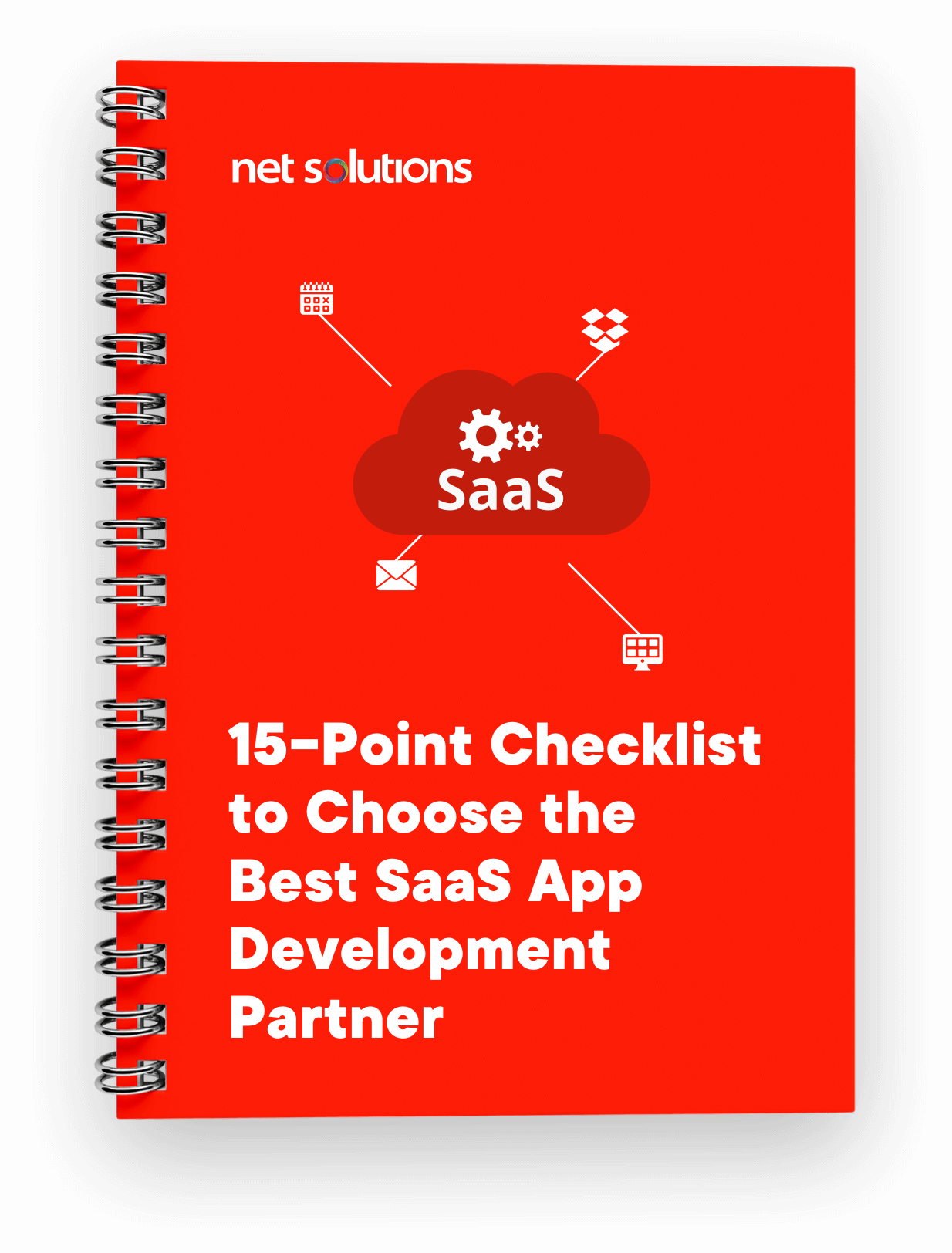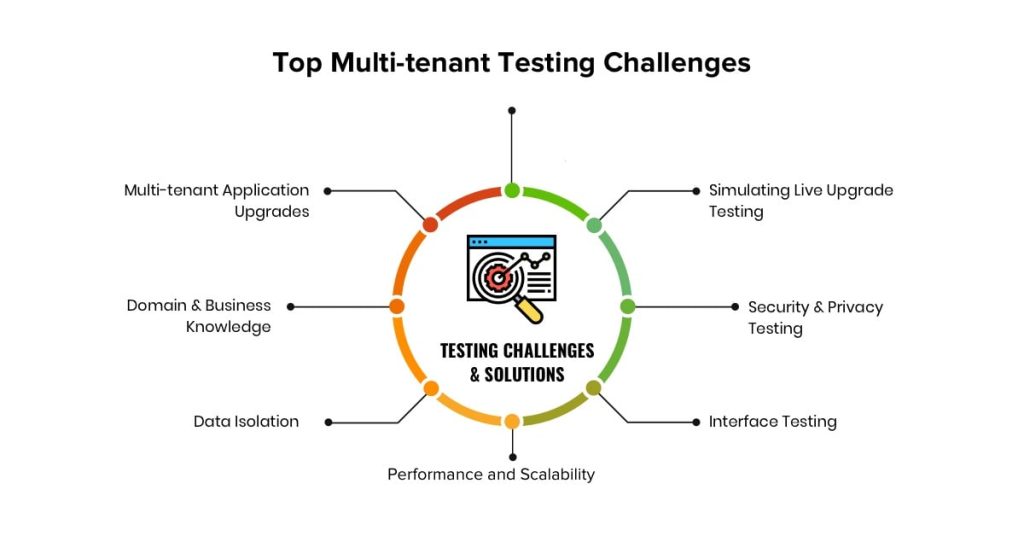Whenever you incorporate changes to the code of the software program, you risk breaking some part of the system that was working well. This is where multi-tenancy testing in SaaS applications plays a significant role in running your software development project smoothly.
Multi-tenant explains a situation where a single case of the product serves various clients. Every customer (tenant) uses the same program, shares the same resources, and usually the same database. The single-user represents a closed group, which is charged and handled as a single entity (tenant). The multiple users represent individuals from various entities, known as multi-tenant. Applications designed to help various tenants with a single program are known as multi-tenant applications.
Multi-Tenant Applications
Multi-tenant applications store the tenant’s data and never expose it to other tenants. The app assures full information security with the help of testing to catch bugs during the software development process.
With multi-tenants, you deliver quick services without the need for extra programming resources, code changes, and database setups. The multi-tenancy drives down the cost of development and maintenance for all tenants in the long term and offers better control to the teams.
When it comes to developing a SaaS application, multi-tenant architecture scores over single-tenant architecture. For software vendors, however, SaaS application development using a multi-tenant architecture is a daunting task. The advantages are countless, but you need to brace yourself for a tough road ahead. Multi-tenancy testing is a highly challenging area.
Why are Multi-tenant Applications Required?
The multi-tenant app is a perfect choice for businesses that want to begin with fewer hardware requirements and easier onboarding. Additionally, it is ideal for customers who don’t have the internal resources to deal with the maintenance requirements of single-tenant SaaS environments. Multi-tenant apps are beneficial in so many ways, few of the common yet most notable are below:
Helps in Cutting the Cost of Investment
While developing a SaaS application, every customer searches for the best solution with less cost of investment. Thanks to the multi-tenant architecture, it helps lessen the investment cost in the long run. Multi-tenant wins over single-tenant architecture since the latter ends up being progressively costly in comparison to multi-tenant.
Since maximum customers use the same application and database, the expense of development and maintenance lowers down for all the customers. Another fundamental factor that helps cost decrease is that multi-tenant applications don’t require new programming resources or changes in codes and not even the setting up of databases for every new tenant.
Adding New Customers is Simple
Including new customers has always been an obstacle for the software vendors as any unsatisfactory on-boarding service can arouse poor possibilities. You have to actualize the correct procedure to onboard the customers with methods such as the self-sign up.
The multi-tenant application offers advantages to the vendors as it has an automated signing up procedure. The configured domain and the sub-domain are automated. The other automated task comprises setting the default data and configuring the application.
More Useful to Maintain the Application
The multi-tenant app architecture appears more available for the vendors to maintain the application. The modules can be designed expertly to make the most out of the application. You don’t have to change the codes or the database as the shared codes are standard.
Also, the cost of maintenance lessens as it is generally shared by the tenants whenever the update is needed.
Holds Multiple Tenants at the Same Time
In multi-tenant architecture, the vendor does not need to develop a new database for every new tenant. The multi-tenant architecture can hold various tenants to use single-tenant support. The data centers need no addition for every tenant. But it will rely upon the size of the app and the quantity of the support.
Components of Multi-tenant Testing

Multi-tenant testing mainly focuses on the components of the application, infrastructure, and network.
Application
A multi-tenant app is a software app with the host software serving multiple tenants on a single code. Multi-tenancy is not to be confused with multi-enterprise and multi-users. Be it a PaaS or SaaS development environment, the scaling and configuration of a multi-tenancy app depend on the architecture.
Interface testing is also essential to measure the changes done for one tenant over other tenants. The multi-tenant application also requires security testing in the form of multi-tenant isolation and access privilege, validation for roles, and application data.
Infrastructure
Infrastructure is the hardware that supports multi-tenant software. The capacity of the hardware should coordinate the software’s work capacity. Poor infrastructure influences loading time, speed, data storage, and transmission, and backup protocols.
Multi-tenant applications have to be tested over infrastructure, having production-like configurations, as it is likely to impact the end-user experience. Infrastructure like back up plans, recoveries, storage policies needs to be validated for regulatory compliance.
Network
The network is a platform for a multi-tenant provider, which usually refers to security tests. Building a multi-tenant network is the very first step to isolate apps and data. Maximum violations occur when the data flow between users is not encrypted.
Testing of the network is required to be carried out from the security perspective, flow of data, and encryption/ decryption techniques such as SSL (Secure Socket Layer). Testing also needs to be carried out over different bandwidths to ensure the availability of data and its transfer.

We respect your privacy. Your information is safe.
Top Multi-tenant Testing Challenges and Solutions

Multi-tenancy application testing challenges are far more complex than those experienced during single-tenant application testing.
1. Multi-tenant Application Upgrades
With the passage of time, the techniques of doing business have changed. Every day there is something new in terms of technology, and businesses need to meet expectations to retain clients consistently. The same software cannot work for an extended period owing to changing business needs. This is valid for a multi-tenant application as well.
Multi-tenant applications must be updated frequently, and the same will have to be communicated with all the tenants. Sometimes updates made to the multi-tenant application for one tenant may not be a necessity for the other tenant. It is easy when designing an app that is meant for a single user. But, when it involves multiple users, a request for variety occurs.
Solution
Some features, like visual or functional, that feel comfortable to one tenant probably would not work for another. After all, what matters is user experience. While testing an app, it is important to guarantee that new features are optional for every tenant.
The best way to overcome the challenge of a frequent upgrade is by using automation testing tools like Selenium and QTP. With automation tools, regression testing is done faster to monitor if the features are working right. Automation helps test a variety of possible updates quickly and saves time for business software.
2. Domain and Business Knowledge
Software should be designed with the goal of an intent specification like requirements analysis, design, or problem-solving to enhance customer engagement. The developer must develop an app that is tenant-centric to help tenants fulfill their requirements around the business objectives.
For example, an app designed for eCommerce customers differs from the one designed for bank employees. The features and priorities change, and the privileges assigned to each tenant vary. The hierarchies depend on what a particular department/business is doing and offering.
Solution
To test the multi-tenant configuration, an automation tool should be used to perform the regression, along with preparing test suites/checklist of all such components across all the tenants and finally validating tenants based on such a list. Additionally, the multi-tenant app performs testing with domain expertise. The apps ought to have experience in the industry that are served by the network.
3. Data Isolation
Multi-tenant architectures have security challenges around data isolation. It is hard to keep data safe from various clients and commingling within a similar framework. There is always a challenge in verifying the customization of a shared database schema for one tenant without affecting the other tenant.
Solution
With multi-tenant applications, data is accessible and visible across multiple tenants with a customized database. For example, tenant-specific information/data is available to each tenant based on their privileges with strict authentication. Whereas, tenant shared data is accessible and shared between all tenants.
4. Performance and Scalability
Although multiple tenants share the same resources, it is necessary to make sure that all the tenants utilize these resources as per their requirements. SaaS providers must offer an app accessible to multiple customers in a single-instance multi-tenant architecture model. In general, if one tenant obstructs a significant portion of the resource, the performance of all other tenants should not be affected.
The Solution
The multi-tenant app offers highly scalable services that perform well with the available resources. This ought to be done in a way where tenant’s use of resources should not influence the other tenant’s performance. The scalability and performance of an app can be tested using performance testing tools such as JMeter and LoadRunner.
5. Interface Testing
Due to customer feedback and new feature development, the Interface of SaaS apps continues to evolve. That is the reason why backward compatibility is needed. The backward compatibility of a SaaS application interface needs to be validated to ensure that the users do not have to make changes at their end when updates are available.
The solution
It is vital to measure the impact of changes over the tenants for which updates are not implemented. It is necessary to know if different tenants can work with new upgraded interfaces or old interfaces since there might have been some integration of their business logic with the solution to be implemented.
6. Security & Privacy Testing
Since multi-tenancy is based on sharing resources, tenants might face security, accessibility, and privacy concerns. SQL attacks are considered the most common dangers of application security. It takes a bit extra expertise to mount an SQL injection. A successful SQL attack is a kind of reward for the hackers who are always ready to steal sensitive information and make unauthorized changes to the content stored in databases.
The Solution
The multi-tenant application must ensure that only tenants can access their data. The data should be tested thoroughly to ensure data security among different/multiple tenants. Proper authentication and authorization mechanisms should be used and tested in multi-tenant applications to make them highly secure. Preventing SQL injection and testing cookies is another point to note as a part of security testing of the multi-tenant application.
7. Simulating Live Upgrade Testing
Another unique challenge while testing a multi-tenant application is ensuring that the live upgrades have zero-to-minimum downtime. It may get complicated as someone might be accessing the application when the application is getting upgraded.
The Solution
It is always necessary to prepare a proper deployment strategy & plan, and this strategy should be tested on a staging environment by QC. Deployment strategy should continue by the shared efforts of the development team, QC, and client.

Conclusion
Most multi-tenancy testing issues include synchronicity and intended use. To avoid these, the software must be designed, tested, and enhanced without breaking the user experience. It should be built in a way where shared information doesn’t leak out to unintended sources.
Multi-tenant applications reduce delivery costs as a single application can be managed for multiple tenants. Automation used for validating the functional and non-functional requirements helps shorten the release cycle of frequent upgrades and releases. With the right strategy and automation tests for both technical and non-technical requirements, organizations can eventually achieve the best business outcomes with multi-tenancy testing.




